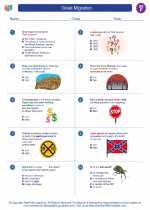Clothing
Clothing is an essential part of human life and has been a significant aspect of culture and society throughout history. It serves several purposes, including protection from the elements, cultural expression, and social identification. The types of clothing worn by people vary depending on factors such as climate, cultural traditions, social status, and personal preference.
Historical Evolution of Clothing
The history of clothing can be traced back to ancient times when early humans used animal skins and natural materials to cover and protect their bodies. Over time, clothing evolved in style, design, and materials, reflecting the advancements in technology, trade, and cultural interactions.
Cultural Significance of Clothing
Clothing plays a crucial role in expressing cultural identity and traditions. Different cultures have unique styles of clothing that reflect their values, beliefs, and customs. Traditional clothing often carries symbolic meanings and is worn during special ceremonies, festivals, and rituals.
Social and Economic Aspects of Clothing
Clothing also has social and economic implications. It can be used to indicate social status, occupation, and group affiliations. Additionally, the fashion industry plays a significant role in the global economy, influencing trends, consumer behavior, and production practices.
Sustainability and Ethical Considerations
With the rise of fast fashion and environmental awareness, there is an increasing focus on sustainable and ethical practices in the clothing industry. This includes efforts to reduce waste, promote fair labor practices, and use eco-friendly materials in the production of clothing.
Study Guide
- What are the purposes of clothing?
- How has clothing evolved throughout history?
- Explain the cultural significance of clothing.
- Discuss the social and economic aspects of clothing.
- What are the sustainability and ethical considerations in the clothing industry?
Understanding the historical, cultural, and social aspects of clothing can provide valuable insights into human societies and the interconnectedness of global communities.
.◂Social Studies Worksheets and Study Guides Sixth Grade. Great Migration

 Worksheet/Answer key
Worksheet/Answer key
 Worksheet/Answer key
Worksheet/Answer key
 Worksheet/Answer key
Worksheet/Answer key
